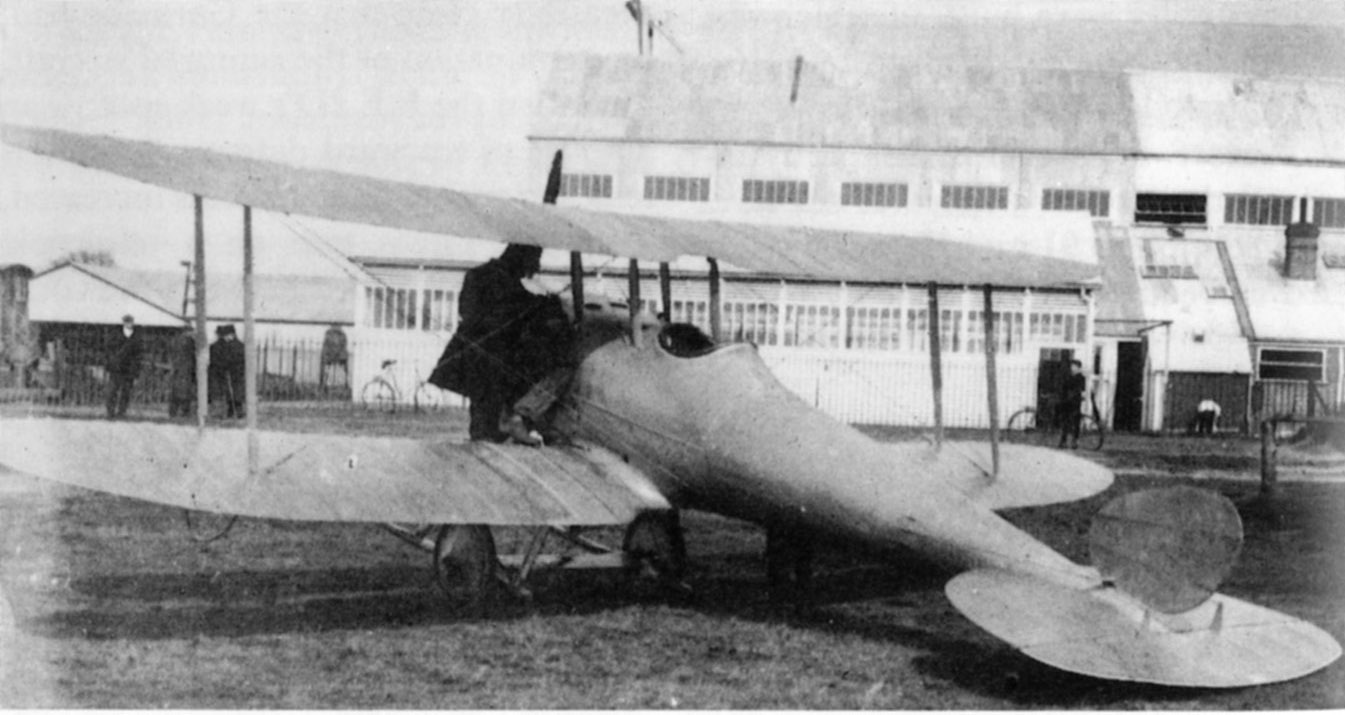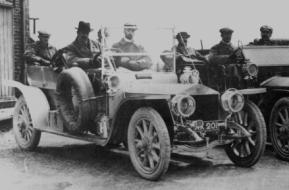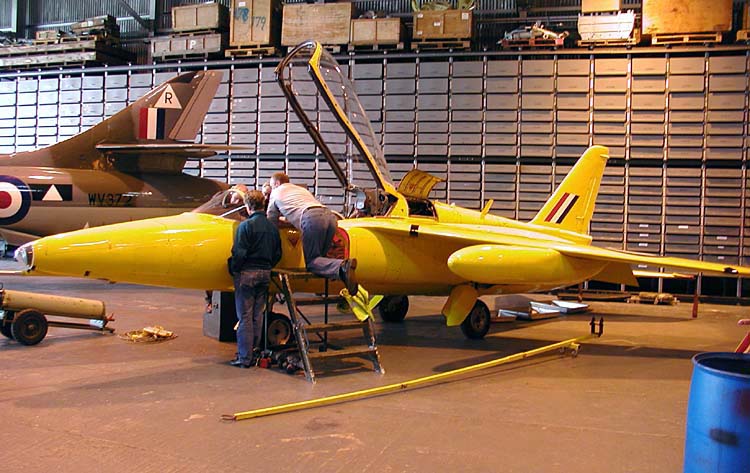|
Royal Aircraft Establishment
The Royal Aircraft Establishment (RAE) was a British research establishment, known by several different names during its history, that eventually came under the aegis of the Ministry of Defence (United Kingdom), UK Ministry of Defence (MoD), before finally losing its identity in mergers with other institutions. The British Army Balloon Factory was established on Farnborough Common in the early 1900s. By 1912 it had come under civilian control and was the Royal Aircraft Factory (RAF) In 1918 it was renamed Royal Aircraft Establishment to prevent confusion with the newly created Royal Air Force. The first site was at Farnborough Airfield ("RAE Farnborough") in Hampshire to which was added a second site RAE Bedford (Bedfordshire) in 1946. On 1 May 1988 it was renamed the Royal Aerospace Establishment (RAE) before merging with other research entities to become part of the new Defence Research Agency in 1991. History In 1904–1906 the Army Balloon Factory, which was part of the A ... [...More Info...] [...Related Items...] OR: [Wikipedia] [Google] [Baidu] |
Farnborough, Hampshire
Farnborough is a town located in the Rushmoor district of Hampshire, England. It has a population of around 57,486 as of the 2011 census and is an important centre of aviation, engineering and technology. The town is probably best known for its association with aviation, including Samuel Cody, Farnborough Airport, the Farnborough International Airshow, Royal Aircraft Establishment and the Air Accidents Investigation Branch. History Pre-history and early settlements The earliest evidence of human settlement around Farnborough dates back thousands of years. Archaeologists have uncovered flint tools and other artefacts from the Mesolithic period, indicating the presence of hunter-gatherer communities in the area over 8,000 years ago. During the Neolithic period, the region saw increasing agricultural activity and the development of more permanent settlements. Excavations have revealed the remains of several prehistoric enclosures and barrows within the boundaries of modern-day Far ... [...More Info...] [...Related Items...] OR: [Wikipedia] [Google] [Baidu] |
Geoffrey De Havilland
Captain (British Army and Royal Marines), Captain Sir Geoffrey de Havilland, (27 July 1882 – 21 May 1965) was an English aviation pioneer and aerospace engineer. De Havilland, The aircraft company he founded produced the de Havilland Mosquito, Mosquito, which has been considered the most versatile warplane ever built,Davenport-Hines, Richard. "Havilland, Sir Geoffrey de (1882–1965)." ''Oxford Dictionary of National Biography''. Ed. H.C.G. Matthew and Brian Harrison. Oxford: Oxford University Press, 2004Oxford University and his de Havilland Comet, Comet was the first jet airliner to go into production. Early life Born at Magdala House, Terriers, High Wycombe, Buckinghamshire, de Havilland was the second son of The Reverend Charles de Havilland (1854–1920) and his first wife, Alice Jeannette (née Saunders; 1854–1911). He was educated at King Edward VI College, Nuneaton, Nuneaton Grammar School, St Edward's School, Oxford and the Crystal Palace School, Crystal Palace S ... [...More Info...] [...Related Items...] OR: [Wikipedia] [Google] [Baidu] |
Rolls-Royce Limited
Rolls-Royce Limited was a British luxury car and later an aero-engine manufacturing business established in 1904 in Manchester by the partnership of Charles Rolls and Henry Royce. Building on Royce's good reputation established with his Crane (machine), cranes, they quickly developed a reputation for superior engineering by manufacturing luxury cars. The business was incorporated as "Rolls-Royce Limited" in 1906, and a new factory in Derby was opened in 1908. The First World War brought the company into manufacturing aero-engines. Joint development of jet engines began in 1940, and they entered production in 1944. Rolls-Royce has since built an enduring reputation for the development and manufacturing of engines for military and commercial aircraft. In the late 1960s, Rolls-Royce was adversely affected by the mismanaged development of its advanced Rolls-Royce RB211, RB211 jet engine and consequent cost over-runs, though it ultimately proved a great success. In 1971, the owners w ... [...More Info...] [...Related Items...] OR: [Wikipedia] [Google] [Baidu] |
Alan Arnold Griffith
Alan Arnold Griffith (13 June 1893 – 13 October 1963) was an English engineer and the son of Victorian science fiction writer George Griffith. Among many other contributions, he is best known for his work on stress and fracture in metals that is now known as metal fatigue In materials science, fatigue is the initiation and propagation of cracks in a material due to cyclic loading. Once a fatigue crack has initiated, it grows a small amount with each loading cycle, typically producing striation (fatigue), striati ..., as well as being one of the first to develop a strong theoretical basis for the jet engine. Griffith's advanced axial-flow turbojet engine designs were integral in the creation of Britain's first operational axial-flow turbojet engine, the Metropolitan-Vickers F.2, which first ran successfully in 1941. Griffith, however, had little direct involvement in actually producing the engine, after he moved in 1939 from leading the engine department at the Royal Aircra ... [...More Info...] [...Related Items...] OR: [Wikipedia] [Google] [Baidu] |
Wright R-790
The Wright R-790 Whirlwind was a series of nine-cylinder air-cooled radial aircraft engines built by Wright Aeronautical Corporation, with a total displacement of about and around . These engines were the earliest members of the Wright Whirlwind engine family. Design and development The R-790 Whirlwind began as the Lawrance J-1, a nine-cylinder air-cooled radial developed in 1921 by the Lawrance Aero Engine Company for the U.S. Navy. The Navy was very enthusiastic about air-cooled engines, which it considered better suited for naval use than liquid-cooled ones.Wright J-5 "Whirlwind" (PDF), by Kimble D. McCutcheon, from the Aircraft Engine Historical Society Lawrance was a small company, though, and the Navy doubted it could produce enough engines for its needs. Despite urgings from the ... [...More Info...] [...Related Items...] OR: [Wikipedia] [Google] [Baidu] |
Armstrong Siddeley Jaguar
The Armstrong Siddeley Jaguar is an aircraft engine developed by Armstrong Siddeley. The Jaguar was a petrol-fuelled air-cooled 14-cylinder two-row radial engine design. The Jaguar III was first used in 1923, followed in 1925 by the Jaguar IV and in 1927 by the Jaguar VI. In 1925 the Jaguar became the first production aero engine incorporating a geared supercharger."World Encyclopedia of Aero Engines – 5th edition" by Bill Gunston, Sutton Publishing, 2006. p.13 Design and development The Jaguar was developed from the Royal Aircraft Factory RAF.8 design proposal of 1916. The RAF.8 was the work of a design team led by F.M. Green, and incorporated the findings of research into aluminium air-cooled cylinders by Samuel D. Heron and Professor A. H. Gibson. Disillusioned by political and press criticism of the Royal Air Factory, Green and his design team, including Heron, left the Factory in January 1917 and took up positions with the Siddeley-Deasy company. There they were req ... [...More Info...] [...Related Items...] OR: [Wikipedia] [Google] [Baidu] |
Siddeley-Deasy
The Siddeley-Deasy Motor Car Company Limited was a British automobile, aero engine and aircraft company based in Coventry in the early 20th century. It was central to the formation, by merger and buy-out, of the later Armstrong Siddeley Motor and Armstrong Whitworth Aircraft companies. History The Deasy Motor Car Manufacturing Company Limited was founded by Henry Hugh Peter Deasy in the factory that had previously been used to manufacture Iden cars. Deasy left in 1908 following disagreements with his Chief Engineer. In 1910 John Davenport Siddeley, 1st Baron Kenilworth, J D Siddeley took up the appointment of managing director having moved to Deasy in 1909 from managing Wolseley Motors, Wolseley. The shareholders were so pleased with his success that on 7 November 1912 they unanimously agreed to change the company's name to The Siddeley-Deasy Motor Car Company Limited. Siddeley's name had been added to the product's radiator in 1912.Bill Smith, ''Armstrong Siddeley Motors'' D ... [...More Info...] [...Related Items...] OR: [Wikipedia] [Google] [Baidu] |
Flight International
''Flight International'', formerly ''Flight'', is a monthly magazine focused on aerospace. Published in the United Kingdom and founded in 1909 as "A Journal devoted to the Interests, Practice, and Progress of Aerial Locomotion and Transport", it is the world's oldest continuously published aviation news magazine. ''Flight International'' is published by DVV Media Group. Competitors include Jane's Information Group and '' Aviation Week''. Former editors of, and contributors include H. F. King, Bill Gunston, John W. R. Taylor and David Learmount. History The founder and first editor of ''Flight'' was Stanley Spooner. He was also the creator and editor of ''The Automotor Journal'', originally titled ''The Automotor Journal and Horseless Vehicle''.Guide To British Industrial His ... [...More Info...] [...Related Items...] OR: [Wikipedia] [Google] [Baidu] |
Poppet Valve
A poppet valve (also sometimes called mushroom valve) is a valve typically used to control the timing and quantity of petrol (gas) or vapour flow into or out of an engine, but with many other applications. It consists of a hole or open-ended chamber, usually round or oval in cross-section, and a plug, usually a disk shape on the end of a shaft known as a valve stem. The working end of this plug, the valve face, is typically ground at a 45° bevel to seal against a corresponding valve seat ground into the rim of the chamber being sealed. The shaft travels through a valve guide to maintain its alignment. A pressure differential on either side of the valve can assist or impair its performance. In exhaust applications higher pressure against the valve helps to seal it, and in intake applications lower pressure helps open it. Etymology The word poppet shares etymology with "puppet": it is from the Middle English ''popet'' ("youth" or "doll"), from Middle French ''poupette'', whic ... [...More Info...] [...Related Items...] OR: [Wikipedia] [Google] [Baidu] |
Samuel Dalziel Heron
Samuel Dalziel Heron (18 May 1891 – 10 July 1963) was a British born aerospace engineer who made major contributions to the design of piston engines. While working in Britain he carried out the first systematic research into air-cooled cylinders. In the U.S.A he contributed to the design of the Curtiss R-1454, invented the sodium cooled poppet valve and became technical director for aeronautical research for the Ethyl Corporation. Early life Sam Dalziel Heron was born on 18 May 1893, in Newcastle upon Tyne, England. He attended Alleyn's School in Dulwich, Goldsmiths' College (London University) and Durham University, near Newcastle upon Tyne. Early career in the United Kingdom During the First World War, Heron worked at the Royal Aircraft Factory. From 1915 to 1916 he worked with Professor A.H. Gibson on the first systematic research into the design of air-cooled engine cylinders. They concluded that (1) aluminium should be used for efficient conduction (2) the cylinder head ... [...More Info...] [...Related Items...] OR: [Wikipedia] [Google] [Baidu] |
Folland Aircraft
Folland Aircraft was a British aircraft manufacturing company which was active between 1937 and 1963. History British Marine Aircraft Limited was formed in February 1936 to produce Sikorsky S-42-A flying boats under licence in the UK. The company built a factory on the western side of the Hamble peninsula with a slipway to Southampton Water. The construction of one Sikorsky based aircraft was started at Hamble, however the company ran out of money and liquidators were appointed. Mergers with other British aircraft companies were considered, including one with Westland Aircraft, but none was followed up.Fagan, Dave. 'Hamble' ''Aviation in Hampshire UK 1900 to 2000'' Retrieved 20 May 2005 In 1937 [...More Info...] [...Related Items...] OR: [Wikipedia] [Google] [Baidu] |
Gloster Aircraft Company
The Gloster Aircraft Company was a British aircraft manufacturer from 1917 to 1963. Founded as the Gloucestershire Aircraft Company Limited during the First World War, with the aircraft construction activities of H.H. Martyn & Co. of Cheltenham, England it produced fighters during the war. It was renamed later as foreigners found 'Gloucestershire' difficult to pronounce. It later became part of the Hawker Siddeley group and the Gloster name disappeared in 1963. Gloster designed and built several fighters that equipped the British Royal Air Force (RAF) during the interwar years including the Gladiator, the RAF's last biplane fighter. The company built most of the wartime production of Hawker Hurricanes and Hawker Typhoons for their parent company Hawker Siddeley while its design office was working on the first British jet aircraft, the E.28/39 experimental aircraft. This was followed by the Meteor, the RAF's first jet-powered fighter and the only Allied jet fighter to be put ... [...More Info...] [...Related Items...] OR: [Wikipedia] [Google] [Baidu] |






